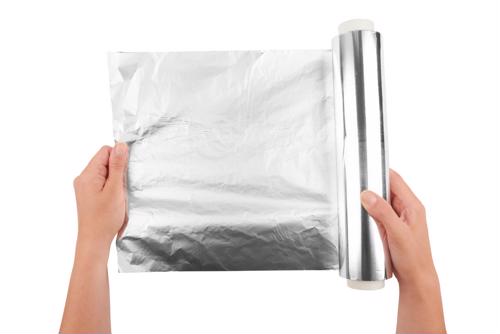Photo Etching: Superior Non-Conventional Fabricating For Aluminum

Aluminum is strong, lightweight and versatile, making it one of the most popular materials for manufacturing components for a wide range of industrial applications. Unfortunately, the same
properties that make it so desirable can also make it problematic to work with.
Problems with other nonconventional fabrication methods
For conventional fabricating processes like stamping and punching, aluminum is just another metal alloy. For the so-called nonconventional processes like plasma cutting, laser cutting and wire EDM, working with aluminum can be both challenging and hazardous.
The problem with using the nonconventional methods for fabricating aluminum is exposing the material to high levels of heat. Aluminum's sensitivity to heat and its reflective surface mean that exposure to high temperatures from plasma, laser or electrical discharge can have a detrimental effect on the final product in terms of material integrity and dimensional accuracy. The Heat Affected Zone (HAZ) forms in metals when the temperature rises above the critical transformation point. Since the HAZ is brittle, this area has a lower tolerance for cracking during bending or stress. In most cases, the HAZ can be eliminated by post-heat treating the part, but there is a risk of distortion. Thermal Distortion is a result of the sudden rise in temperature of the material near the cutting zone. Distortion also can be attributed to the rapid solidification of material remaining on the sides of the cut.
As if the work wasn't challenging enough, the hazards involved with heat-intensive fabrication processes such as plasma or laser cutting are not easily avoided. For example, dry cutting aluminum with a plasma beam creates a lot of dust, meaning that insufficient ventilation can lead to high concentrations of harmful particles in the air.
For these reasons, manufacturers will try to plasma cut materials on a water table. While submerging the work under water removes the hazards associated with dust and heat, it poses other more explosive dangers.
As ESAB noted, when aluminum metal is submerged in water, it will generate hydrogen gas. To get an idea of how this works, picture a glass of Coca Cola with those tiny carbon dioxide bubbles coming up seemingly out of nowhere to the top of the glass. In the same way, when aluminum is submerged under water, the metal reacts with the water and little bubbles of hydrogen gas rise to the top of the tank. The dangerous part comes in when a high-volume of aluminum parts are made in this way over a period of time.
Over time, the small aluminum droplets created through the plasma cutting process collect on the bottom of the water table, leaving a large surface area of aluminum that generates hydrogen bubbles over the course of days, weeks and months. If a significant pocket of hydrogen gas gets trapped under the plate and an operator pierces the plate with the plasma beam, it can cause an explosion.
What makes photo etching superior to other non-conventional processes?
Since before Conard's founding, photo etching aluminum was a difficult and inconsistent process. The main problem, even today, is that aluminum has a tendency to oxidize quickly in the etching process, becoming a catalyst for the etching reaction itself. Aluminum can also be etched in both acids and bases meaning that the stripping solution for dissolving the acid-resistant photo resist - itself a base - can also lead to additional unwanted etching.
So what makes it the superior choice for machining aluminum compared to other nonconventional fabrication methods?
For starters, it negates the inherent problems of dust creation and high temperatures that come with heat-intensive nonconventional cutting methods. Photo etching is a wet, but not submerged, and cool (125 degrees F) process that creates no thermal stresses and produces no harmful fumes or dust. For this reason, the remaining aluminum's integrity remains unaltered after the machining process, with no burrs or inconsistent dimensions.
Even better: Through decades of refining Conard's proprietary aluminum etching process developed by our founder, Richard Huttinger, we've found a way to consistently minimize the impact of aluminum's natural reaction to the etching and stripping processes, meaning each batch of our aluminum products comes out the same every time. Building on Richard's foundation, we've developed unique proprietary equipment and process metrics that have helped our business expand into many industries that need a low-cost, consistently reliable method for etching high-quality thin gauge aluminum parts.
If your aluminum needs include:
- Material thicknesses from .001" to .080"
- Dimensional tolerances within +/-15% of material thickness
- Smooth, consistent edges
- Design support
then give us a call at 800-443-5218 or email your designs to us at sales@conardcorp.com and let's get started photo etching for you!


